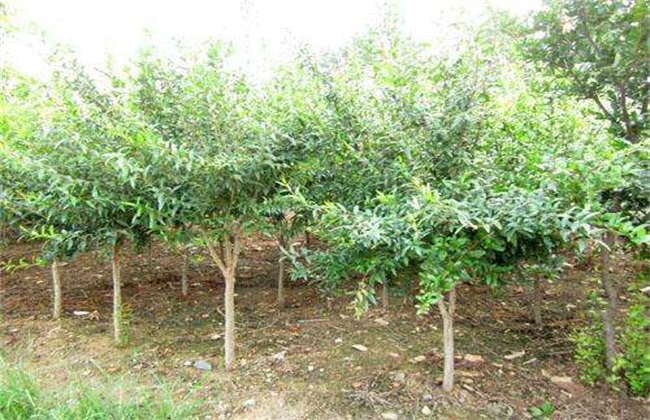Time and method of pomegranate transplantation
Pomegranate taste sweet, is the inhibition fruit that everyone likes to eat, and there are more growers, but farmers often adopt the method of seedling transplantation when planting, which can significantly improve the yield and quality of pomegranate. But there will be all kinds of problems during the transplant, so when will the pomegranate be transplanted? How to manage it after transplantation? Let's get to know it.

When will the pomegranate be transplanted?
Pomegranate can be transplanted all the year round, but it is better in spring and autumn. generally, the temperature in the north is lower, and most of the pomegranates are transplanted in March-April in spring. the temperature in the south is higher and can be brought forward appropriately. Transplanting in autumn is generally carried out from September to October, too late is not conducive to root survival, if the temperature is very low in winter in the south, it can also be planted late, but not too late.
1. Spring transplant
The temperature rises quickly in spring, and the air is also relatively dry, so the roots of seedlings will have a recovery stage after transplanting, so they sprout relatively. When the soil moisture is insufficient, the top branches of seedlings are easy to dry and lose water, so we should pay attention to watering and shrunk branches at the same time. If there is a shortage of water or drought, it should be transplanted with leaves after rain according to the local climate change, so that it does not need to be watered and the survival rate is relatively high.
2. Autumn transplant
Autumn transplantation can be carried out in the nursery, when the soil moisture is good, the climate is suitable, generally sprouting is heavy in the second year, but we should pay attention to early transplantation, so as to avoid low temperature, when transplanting is not conducive to root survival.
II. Post-transplant management
1. Pour enough water to fix the root
After pomegranate transplanting, no matter what the soil moisture is, it is necessary to timely pour enough fixed root water, seal holes with soil or plastic film to preserve soil moisture after water infiltration, and irrigate it timely according to precipitation. Urea was applied in summer after planting to promote its growth and development, and phosphorus and potassium fertilizer was applied after August to promote the maturity of branches and enhance the ability of overwintering.
2. Ploughing and weeding
After the seedling germination, it is necessary to plough and weed timely in order to increase temperature and preserve soil moisture, and pay attention to ploughing and weeding in time after rain or watering, so as to keep the soil loose and weed-free.
3. Plant management
After transplanting, the single trunk of the densely planted orchard is about 80 cm high, and all the redundant branches are removed; while the sparsely planted pomegranate orchard or the pomegranate orchard transplanted by big trees can be shaped according to the specific conditions of the tree shape, and the excess strips germinating at the base of all roots should be cut off in time to reduce the consumption of nutrition.
4. Remove the buds
For the stock ou'an transplanted by big trees, it is necessary to remove all the buds in that year in order to promote the restoration of the tree and lay a solid foundation for later flowering and fruiting. In addition, we should also pay attention to the reproduction of diseases and insect pests, timely check the survival of seedlings, and replant in time.
The above is the introduction of pomegranate transplant time and methods, hope to help you, want to know more related knowledge, please follow us.
Related
- Moge, come on! The staff of the peasant association in the producing area of cantaloupe were frightened when the crowd gathered.
- Causes and Solutions of low Fruit setting rate of Apple
- Symptoms and control measures of passion fruit virus disease
- Fruit growing lesson: how do apple orchards keep high yields?
- Can you build orchards in the mountains? What are the pros and cons?
- How to manage the coloring period of Crisson grape?
- This paper introduces the processing technology of two kinds of fig products.
- How much is a month for retired teachers in rural areas by 2020?
- How can strawberry planting increase sugar content? We should pay attention to management in many aspects.
- What are the cultivation techniques on how to improve the yield of golden fruit?



